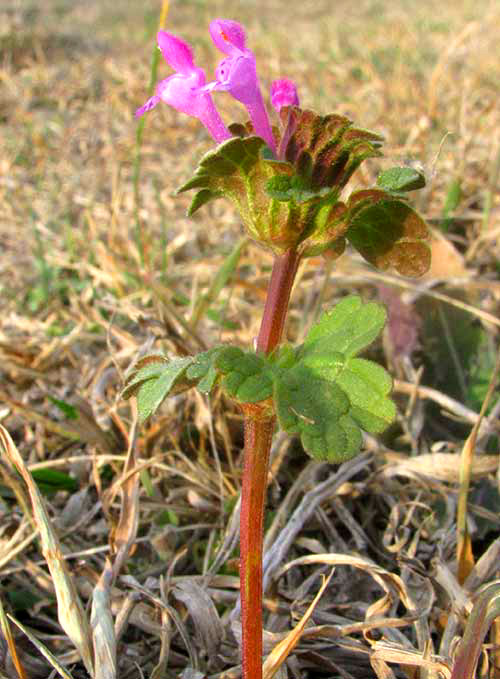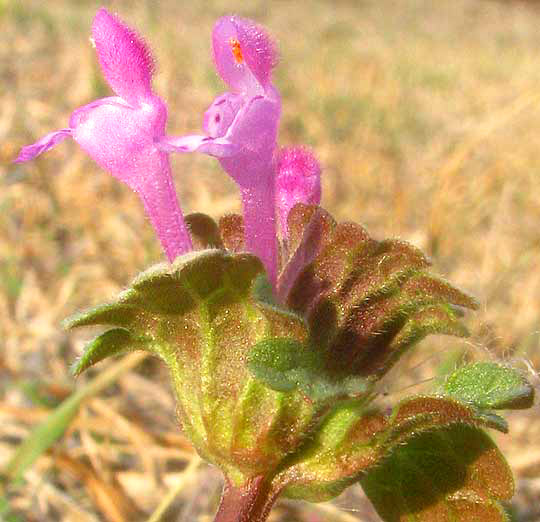Excerpts from Jim Conrad's
Naturalist Newsletter
from the March 10, 2013 Newsletter issued from the valley of the Dry Frio River in northern Uvalde County, southwestern Texas, on the southern border of the Edwards Plateau; elevation ~1750m (~5750 ft); N29.62°, W99.86°; USA
HENBIT
In lawns and along sidewalks and roads throughout North America Henbit is one of the earliest flowering, most common "weeds" announcing spring. I thought that maybe here it would be too arid for it, but on Thursday a two-inch-tall sprout developed its first blossoms in the grassy area next to the cabin, as shown below:

Henbit, a native of Eurasia and northern Africa, is LAMIUM AMPLEXICAULE, and it's a member of the Mint Family. Field marks confirming that it's a mint include its stem being square in cross section, its leaves occurring opposite one another on the stem, and its 5/8ths-inch long (15mm) flowers being "two-lipped" with definite upper and lower lobes. A close-up of the flowers is shown below:

Henbit can flower so early because it's a winter annual -- a plant that germinates in autumn, lives through the winter, and produces seed and dies the following season. This strategy gives it a head start on other plants whose seeds don't germinate until spring.
Despite Henbit being a mint, its herbage doesn't have a minty taste or smell. I know about the taste because sometimes I nibble on the leaves, which can be added to salads or used as a potherb. They're only about the size of a thumbnail, though, so you have to pick lots of them to get a mouth full. Basically the leaves have no taste at all, but in a world where you might be hungry someday and the landscape is populated mostly with plants with bitter or even toxic herbage, it's good to keep in mind the possibility of someday eating Henbit.
I wouldn't want to eat much of it, though, because the literature says that medicinally Henbit is "... antirheumatic, excitant, fever-reducing, laxative, stimulant, and has agents that induce sweating."
Henbit often grows alongside another weedy, spring-blooming species called Purple Deadnettle, Lamium purpureum. Purple Deadnettle has similar flowers and general aspect as the Henbit, but its leaves arise on petioles and are more clustered toward the stem's top. You can see that Henbit's leaves arise directly from the stem with no petiole.